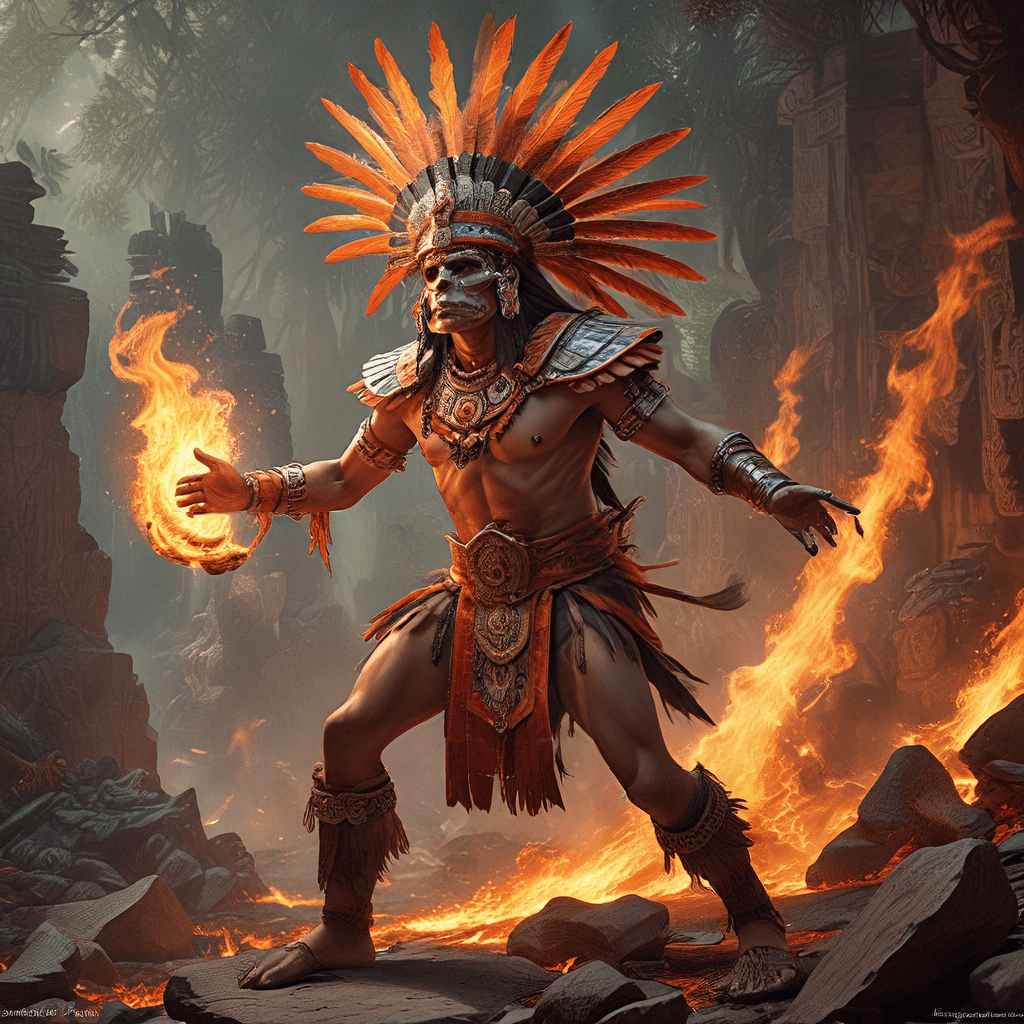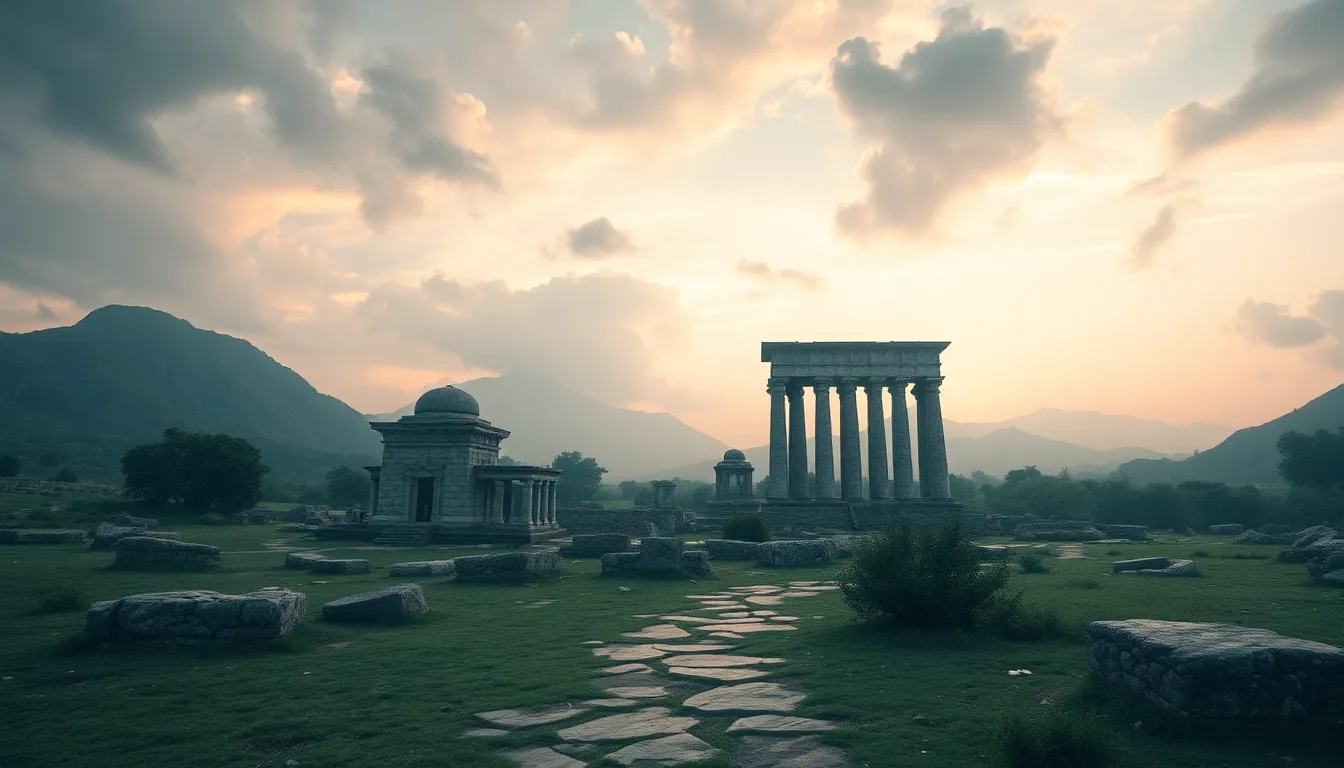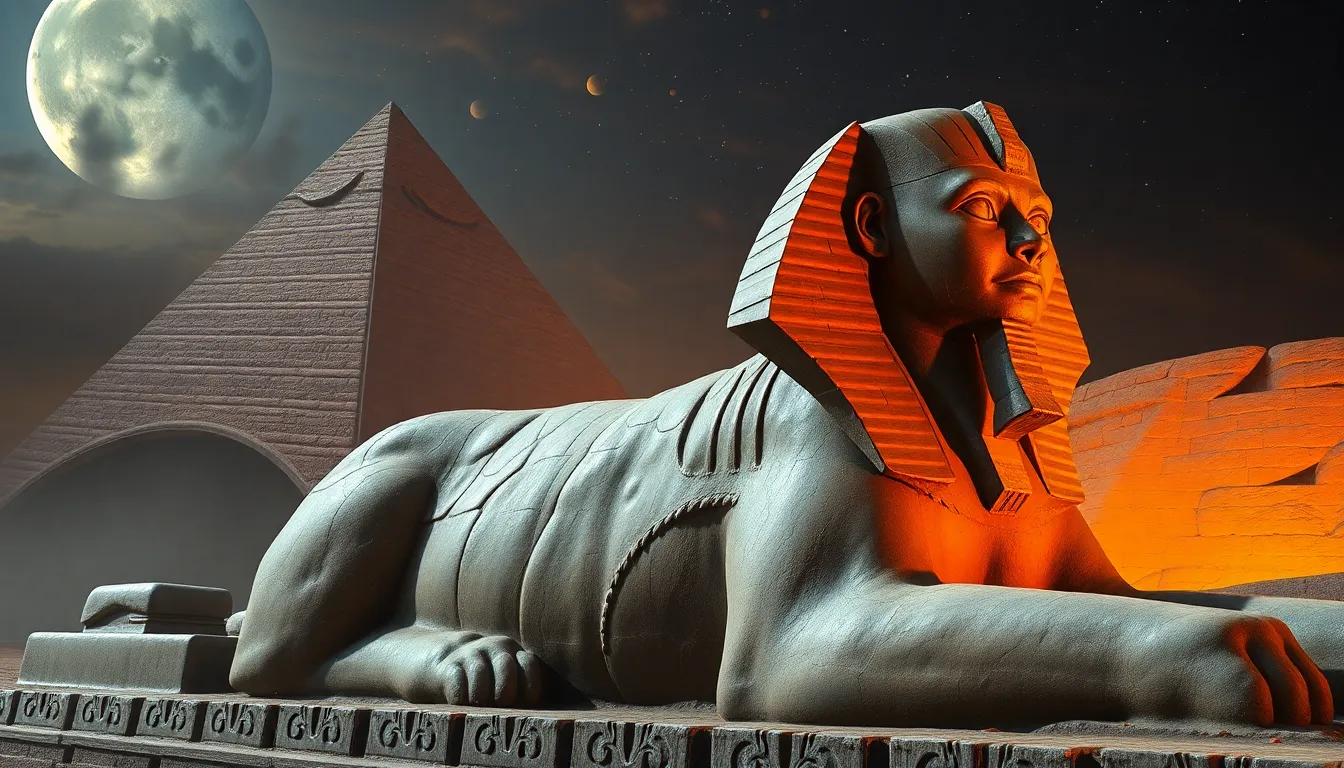The Myth of Huehueteotl: The Aztec God of Fire
Huehueteotl, the Aztec god of fire, is a fascinating and complex figure in ancient Mesoamerican mythology. He was a powerful deity who played a crucial role in Aztec life and religion. From his association with the creation of the world to his influence on daily life, Huehueteotl's presence was deeply intertwined with the beliefs and practices of the Aztec people. The myth of Huehueteotl offers a window into their understanding of the world and their relationship with the forces of nature.
Huehueteotl: An Ancient Deity and His Importance
Huehueteotl, whose name translates to "Old Man of Fire," is a figure steeped in antiquity, dating back to pre-Aztec times. He was revered as one of the most important deities in the Aztec pantheon, holding sway over a fundamental element vital to their existence: fire. Fire was not simply a source of warmth and light for the Aztecs; it was a vital component of their religious rituals, cooking, and daily life. The Aztecs believed that fire held a sacred power, a force capable of both creation and destruction. As the embodiment of this powerful element, Huehueteotl held a unique and significant position among the Aztec gods.
The Role of Fire in Aztec Culture and Religion
Fire played a central role in Aztec culture, holding a deeply symbolic and practical significance. It was considered the life force of the sun and was associated with the creation of the world. Fire was used in various rituals, including the burning of incense and offerings to appease the gods. It was also integral to daily life, used for cooking, heating, and even in warfare.
Huehueteotl: The Old Man of Fire
Huehueteotl was often depicted as an old man, representing the wisdom and experience associated with fire. He was often portrayed with a red face, symbolizing the heat of fire, and carrying a burning torch or a smoking incense burner. His appearance, a combination of age, wisdom and fire, reflected the dual nature of fire: both a source of warmth and comfort, and a destructive force.
Depiction of Huehueteotl in Aztec Art and Iconography
Huehueteotl's influence is evident in Aztec art and iconography. He was frequently depicted in murals, sculptures, and pottery, often seated on a throne and holding a burning torch or incense burner. His representation in Aztec artwork varied, but he was commonly depicted with red paint, symbolizing fire, and a white beard, representing his age and wisdom. The way he is portrayed in these artifacts further emphasizes the importance of fire and the reverence held for Huehueteotl in Aztec society.
The Creation Myth and Huehueteotl’s Role
The Aztec creation myth, a story of the world's origins, features Huehueteotl in a pivotal role. In this narrative, the gods, tired of their chaotic existence, sought to create a world in which they could establish order. The god Tlaloc, representing the element of water, brought forth the earth from the ocean depths. However, the world remained cold and dark. To bring forth life and light, Huehueteotl was called upon. He took a fiery torch from the underworld, igniting the world and setting the sun in motion. This powerful act brought forth warmth, light, and ultimately, the creation of the world as we know it. Huehueteotl's influence in the creation myth is significant, highlighting his importance as a life-giving force and the source of the sun's power.
Huehueteotl and the Elements: Fire, Earth, and Water
Huehueteotl's dominion over fire naturally connects him to the other elements: earth and water. He is often depicted as a trinity with Tlaloc (water) and Tezcatlipoca (earth), representing a balance of forces. While Tlaloc is considered the god of rain and fertility, his power is countered by Huehueteotl, who represents the potential for destruction through fire. This dynamic relationship between the elements embodies the ongoing balance and tension within nature, a concept deeply embedded in Aztec thinking. The interconnectivity of these elements, symbolized by Huehueteotl's power over fire, reflects the delicate balance that governs the universe.
Rituals and Offerings to Huehueteotl
The Aztecs performed various rituals and offered sacrifices to Huehueteotl to maintain his favor and appease his power. Fire rituals, often performed in temples dedicated to Huehueteotl, involved burning incense, offerings of food, and even human sacrifices. These sacrifices were believed to strengthen the connection between the human world and the divine realm, ensuring the continued flow of life force and the sun's energy. The burning of incense and offerings symbolized the devotion of the people to Huehueteotl and their dependence on his power. These rituals, which were often accompanied by chanting, drumming, and dancing, served to honor the god and maintain the delicate balance of the world.
Huehueteotl’s Connection to the Sun and the Harvest
The sun, as a source of life and warmth, played a critical role in Aztec culture and agriculture. Their success in farming was directly linked to the sun's power. Huehueteotl, as the god of fire, was seen as a conduit for the sun's energy, controlling its strength, cycle, and the seasons. His power was crucial to the success of the harvest and the well-being of the people. The Aztecs believed that Huehueteotl's power influenced the sun's journey, bringing forth life-giving warmth in the summer and ensuring the necessary darkness for rest during winter. They revered him as a provider, acknowledging his role in nourishing the land and ensuring its prosperity.
Possible Historical and Cultural Influences on the Myth of Huehueteotl
The myth of Huehueteotl, like many ancient myths, likely evolved over time, influenced by various historical and cultural factors. Some scholars believe that the worship of Huehueteotl may stem from earlier Mesoamerican cultures, who also held fire in high regard. The influence of earlier civilizations, their beliefs about fire, and their rituals connected to it, may have contributed to the development of the myth of Huehueteotl. Furthermore, the Aztecs, being a highly sophisticated civilization, may have incorporated their own cultural beliefs, knowledge about astronomy, and understanding of nature into the existing mythology. This interplay of historical influences is evident in the complexity and richness of the myth of Huehueteotl, showcasing the evolution of religious beliefs and cultural practices over time.
FAQ
Q: Why was Huehueteotl important to the Aztecs?
A: Huehueteotl, the god of fire, was crucial to the Aztecs because he was believed to be a source of life-giving energy. He was connected to the sun, the harvest, and even the creation of the world itself. His power was essential for their survival and success.
Q: What were the rituals performed to honor Huehueteotl?
A: The Aztecs conducted numerous rituals to honor Huehueteotl. These rituals often involved fire, including burning incense, offerings of food, and even human sacrifices. They believed these actions appeased the god and ensured the continuation of his power.
Q: How is Huehueteotl's connection to the sun significant?
A: The sun was vital for the Aztecs, providing warmth and energy for their agriculture. Huehueteotl's connection to the sun made him a critical figure for their survival and prosperity. He was seen as the god who controlled the sun's strength and cycle, ensuring the success of their harvests.
Q: What evidence supports the myth of Huehueteotl's existence?
A: While the myth of Huehueteotl is not directly supported by archaeological evidence, his presence is evident in Aztec art and iconography. He was often depicted in murals, sculptures, and pottery, showcasing his importance in their culture and religion. These artifacts offer valuable insights into the beliefs and practices surrounding this powerful deity.
Q: What is the overall significance of the myth of Huehueteotl?
A: The myth of Huehueteotl provides a fascinating glimpse into the Aztec worldview. It reveals their reverence for the elements, their understanding of the universe, and their relationship with nature. It also highlights the interconnectedness of life, death, and the divine, demonstrating the complexity of their belief system and the vital role that fire played in their lives.




